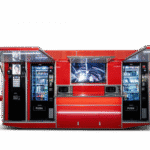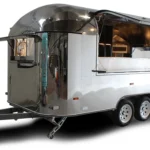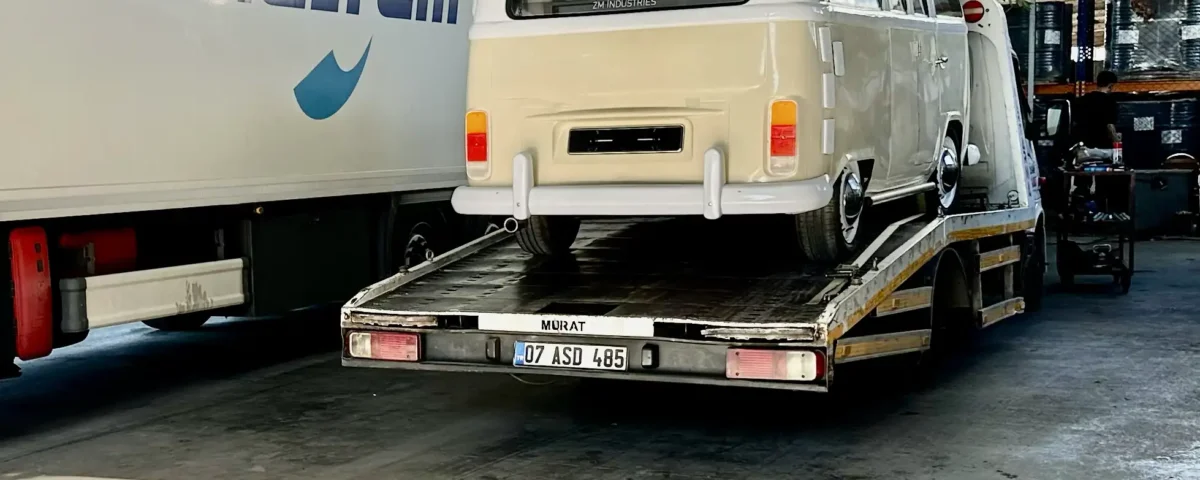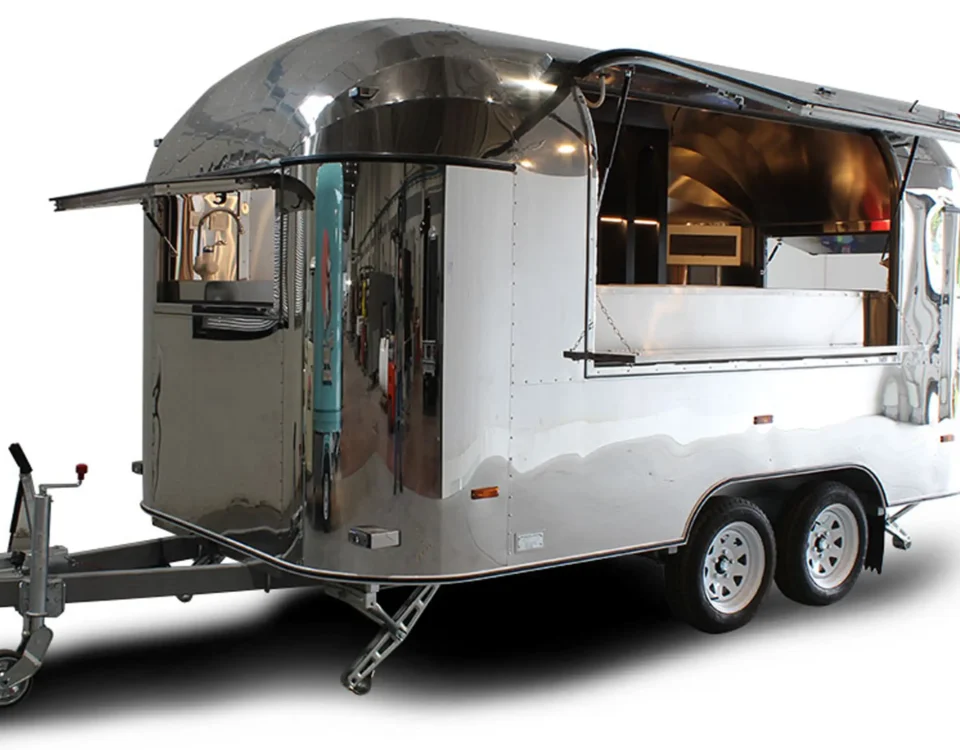
Most Popular Food Trucks in Europe
March 18, 2024
Food Truck Business Strategies for Sustainable Growth
March 18, 2024Food trucks have become an essential part of Europe’s vibrant street food scene, offering diverse and affordable dining options in cities across the continent.
From London’s bustling King’s Cross to the lively markets of Amsterdam and Berlin, these mobile kitchens serve a wide range of local and international flavors, attracting both locals and tourists alike. Food trucks in Europe provide access to unique culinary experiences without the need for expensive dining, blending convenience with quality in markets, festivals, and city streets.
The popularity of food trucks extends beyond just food; they contribute to local culture and innovation by bringing together traditional recipes and modern twists. European cities are home to numerous festivals and dedicated food truck hubs where more than a hundred vendors showcase their specialties, from Dutch bitterballen to Spanish paella. This trend reflects the continent’s growing appetite for flexible, social dining that connects people with new tastes and vibrant food cultures in everyday settings.
Food Truck Culture in Europe
Food trucks have evolved into a vibrant part of European urban life, blending tradition with innovation. Their growth is shaped by historical influences, regional popularity, and a lasting impact on local culinary practices.
Historical Development
The food truck culture in Europe began gaining traction in the early 2000s, inspired largely by the established food truck scene in the United States. Initially, mobile food vendors offered simple, affordable fare targeting busy city workers.
In recent years, this scene has expanded dramatically, with food trucks becoming fixtures at festivals, markets, and other events. They have revitalized street food traditions, especially in countries with a rich culinary heritage.
This shift has been fueled by urbanization and changing dining habits, encouraging chefs to experiment with new formats and menus. Today’s European food trucks often feature gourmet dishes alongside traditional street eats.
Popularity Across Countries
Food trucks enjoy widespread popularity across European cities, but the scale and style vary greatly. For example, France is known for food trucks offering gourmet sandwiches and regional flavors, while Germany blends street food festivals with traditional dishes.
Italy hosts mobile food festivals like Streeat Food Truck Festival, traveling between cities like Milan and Rimini. The UK, particularly London, is recognized for fusion cuisine and diverse offerings influenced by multiculturalism.
Berlin and Paris stand out for frequent food truck markets, attracting both locals and tourists. The accessibility and variety make food trucks an economical alternative to traditional restaurants, often at half the typical dining cost.
Influence on European Cuisine
Food trucks in Europe have introduced a new layer of culinary diversity by merging traditional recipes with contemporary trends. Chefs use this platform to experiment with fusion dishes, creating unique food experiences that appeal to younger, urban demographics.
They have also increased access to local specialties in a casual setting, encouraging more people to explore regional flavors outside formal dining environments. This accessibility has helped preserve and modernize heritage foods.
Additionally, food trucks contribute to culinary innovation by responding quickly to food trends and incorporating international influences, expanding the definition of European street food beyond national borders.
Starting a Food Truck Business in Europe
Launching a food truck in Europe requires navigating various rules, securing permits, selecting high-traffic locations, and investing in the right equipment. Success depends on understanding local regulations, targeting suitable customer bases, and managing startup expenses effectively.
Licensing and Regulations
Each European country has specific regulations for food trucks, with permits usually managed locally despite EU-wide vehicle standards. Entrepreneurs must obtain health and safety certifications, food handling licenses, and trading permits valid in the intended city or region.
In countries like Germany and the Netherlands, compliance with strict hygiene standards is mandatory. Operators often need a mobile vending permit plus parking authorization. Insurance and compliance with waste disposal rules are also common requirements.
Startup plans should include researching local municipality offices and chambers of commerce for detailed licensing steps. Keeping thorough documentation and regular inspections helps avoid fines and operational disruptions.
Choosing the Right Location
Location choice directly impacts daily sales and brand visibility. High foot traffic areas such as city centers, markets, event venues, and business districts are prime targets.
Competition levels vary by city; for example, the Netherlands has a saturated market, increasing the need for a unique food concept. Seasonal events and festivals offer temporary but lucrative sales spikes.
Operators should also consider local parking regulations and accessibility for supply deliveries. Securing a reliable and consistent spot boosts customer loyalty and maximizes revenues.
Startup Costs and Equipment
Initial investment includes the food truck or trailer purchase, kitchen equipment, permits, and branding. Trucks can cost between €20,000 to €100,000 depending on customization and country.
Essential equipment includes cooking appliances, refrigeration units, power supply systems, and plumbing for water and waste management. Mobile internet and point-of-sale systems support efficient sales operations.
Budgeting should also account for ingredient sourcing, staff wages, and marketing efforts. Careful planning over expenses helps ensure sustainable cash flow during early stages of the business.
Popular Cuisines and Menu Ideas
European food trucks offer a diverse range of dishes that reflect both traditional and modern tastes. Their menus often combine classic local ingredients with innovative culinary approaches. This variety appeals to a wide audience, from those seeking comforting local snacks to those interested in new, bold flavors.
Local European Favorites
Many food trucks emphasize dishes deeply rooted in their country’s culinary heritage. Greek souvlaki, consisting of grilled meat wrapped in pita with fresh vegetables and tzatziki, showcases simple yet flavorful ingredients. Meanwhile, French food trucks frequently feature crêpes filled with sweet or savory items, highlighting local dairy and produce.
Italian street food like arancini, fried rice balls stuffed with cheese or meat, is another staple. German bratwurst sausages served in fresh bread rolls often accompany local mustards or sauerkraut. These options reflect longstanding regional preferences and are widely recognized by both locals and travelers.
Fusion and International Options
Food trucks in Europe increasingly blend multiple culinary traditions to attract diverse customers. London, for example, is known for its variety of fusion trucks offering combinations like Korean tacos or currywurst with Asian-style sauces. These dishes merge flavors familiar to different cultures in accessible formats.
Falafel and shawarma wraps, popular in France’s urban food truck scene, demonstrate how Middle Eastern cuisine has become integrated into European street food culture. Such fusion menus often incorporate international spices, herbs, and preparation techniques to provide unique yet approachable options.
Seasonal & Regional Ingredients
Food trucks frequently adjust their menus to incorporate fresh, local, and seasonal ingredients. In Mediterranean countries, summer menus might highlight tomatoes, olives, and fresh herbs, while winter selections include root vegetables, cheeses, and game meats. This approach balances flavor, sustainability, and cost-efficiency.
Many vendors source regional specialties, such as smoked fish from northern Europe or wild mushrooms from forested areas, to create distinct offerings. Highlighting seasonality helps maintain ingredient quality and encourages a connection to regional agricultural cycles, enhancing the authenticity of dishes.
Best Cities for Food Trucks in Europe
Several European cities have developed vibrant food truck scenes, each offering distinct flavors and cultural influences. The diversity and creativity of these urban food vendors make them ideal places to experience fast, affordable, and high-quality street food.
London
London’s food truck scene is notable for its diversity and innovation. The city hosts numerous street food markets, especially in areas like Shoreditch and Southbank, where vendors offer everything from gourmet burgers to international dishes.
Trucks often participate in seasonal events and festivals, drawing crowds with unique menus and quality ingredients. London combines traditional British fare with global flavors, catering to a broad range of tastes. The city’s regulatory environment supports food trucks, allowing them to flourish in busy, accessible locations.
Berlin
Berlin is renowned for its relaxed and alternative food culture, which reflects strongly in its food truck offerings. Trucks around Kreuzberg and Friedrichshain serve inventive dishes, mixing local favorites like currywurst with international street food trends such as Korean BBQ and Middle Eastern wraps.
The city’s affordable prices and welcoming atmosphere encourage new chefs to launch food trucks, creating a dynamic culinary landscape. Berlin also hosts dedicated street food festivals, attracting both locals and tourists eager for freshly prepared, diverse cuisine on the go.
Amsterdam
Amsterdam’s food truck scene offers a blend of Dutch classics and modern fusion dishes. Food trucks cluster near events, parks, and busy squares like Museumplein, making them convenient stops for visitors and residents alike.
Vendors emphasize sustainable ingredients and often incorporate organic or locally sourced produce. Amsterdam’s compact city layout and pedestrian-friendly spots enable food trucks to create bustling social hubs where people gather to enjoy quick bites and casual dining outdoors.
Trends and Innovations in European Food Trucks
European food trucks are evolving with a focus on environmental responsibility, tech-driven service, and community-driven events. These shifts are reshaping how food trucks operate and engage with their customers.
Sustainable Practices
Sustainability is a growing priority in European food trucks. Operators are increasingly using locally sourced ingredients to reduce carbon footprints and support regional farmers. Many trucks have adopted biodegradable packaging to minimize waste.
Energy efficiency is another key focus. Trucks often integrate solar panels or energy-saving appliances to lower fuel consumption. Some also implement food waste management systems to compost scraps or donate surplus food.
Consumer demand drives these changes. European customers, especially younger ones, value quality and environmental impact, making sustainability a crucial aspect of food truck success.
Digital Ordering and Payments
Digital technologies streamline ordering and payment processes in European food trucks. Many use apps and QR codes to enable contactless orders, reducing wait times and improving customer experience.
Mobile payment platforms like Apple Pay and Google Wallet are common, reflecting a wider European trend toward cashless transactions. This shift also allows food trucks to efficiently track sales and manage inventory.
Social media integration plays a role in promotion and customer engagement. Real-time updates on locations and menus via Instagram or Facebook enhance accessibility and convenience.
Mobile Food Festivals
Mobile food festivals are flourishing as a platform for food trucks across Europe. These events bring together diverse trucks offering multicultural cuisines, reflecting urban culinary diversity in cities like London, Berlin, and Paris.
Festivals create opportunities for trucks to reach new audiences and form collaborations. They often emphasize sustainability, tech innovation, and local flavors as key themes.
These gatherings foster a community around street food culture, expanding the sector’s visibility and appeal to varied consumer preferences across Europe.




